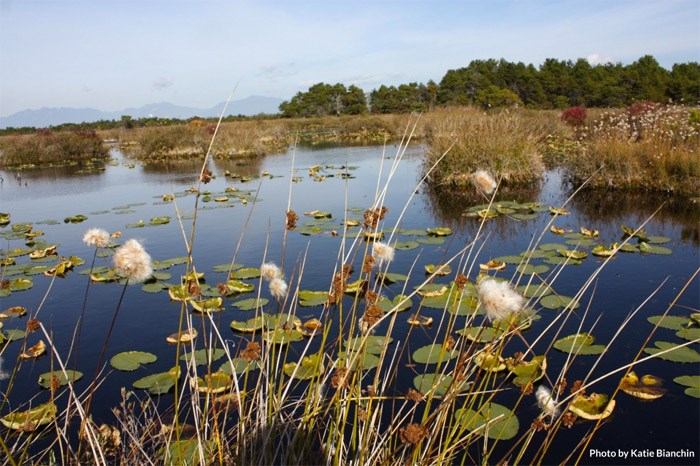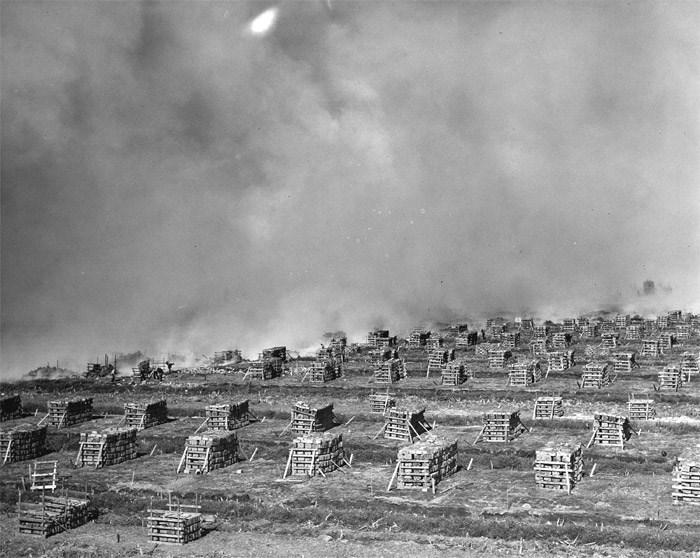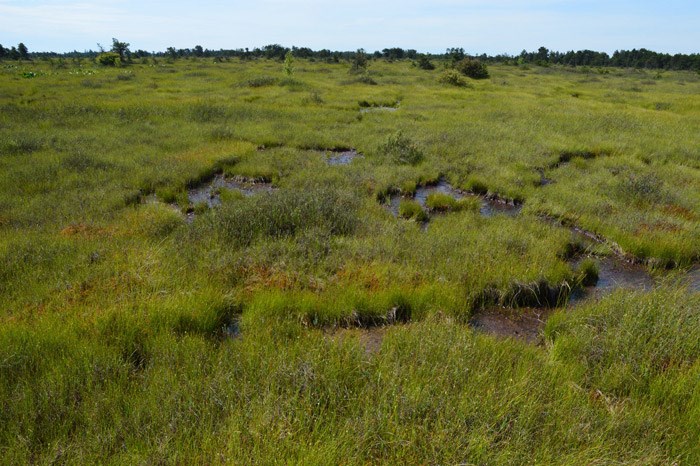By now you've either heard about the 55 hectare Burns Bog fire that started on Sunday or you've seen it with your own eyes. The plume of smoke that rose into the sky south of our city was visible from pretty much everywhere in Metro Vancouver today and has been the focus of many news reports, for good reason.
Fires in the dry parts of the bog aren't unheard of, with notable ones happening in 1977, 1990 (twice), 1994, 1996, 2005, 2007, and now this one [SOURCE]. But many of us living in Vancouver have never even been to Delta, never mind the bog. So we've put together this list of a few facts to bring you up to speed about the area that will be reported on in the news over the next few days as fire crews gain control.
1. Burns Bog is "the largest undeveloped urban landmass in North America"
It contains "3,000 hectares of the Fraser River delta between the south arm of the Fraser River and Boundary Bay" [SOURCE]. It's 8 times the size of Stanley Park and is the massive darker green part shown on the map below.
2. You can hike a part of it (when it's not burning)
"Only a small portion of the area on this sensitive eco-system is accessible to the public in an area on the eastern side called the Delta Nature Reserve. Raised boardwalks weave through the forested areas, passing over unique plants life created by the bog." [SOURCE]
3. It's a crucial bird habitat
Burns Bog is "A vital stopover for migratory birds: over 400 species seen!" and contains "Critical habitat for the regionally endangered Greater Sandhill Cranes" [SOURCE]

4. They used to mine for peat in the bog in the 1940's
"Two peat plants were established in Burns Bog, one on the east side in 1942 and one on the west side in 1944. The Optimist reported that this peat industry was a higher priority than shipyards, aircraft factories or the shipping of spruce for airplanes" [SOURCE]
 Peat mining (and peat fires!) were a big there in the 30’s and 40’s. This 1938 photo shows a fire over peat stacks on nearby Lulu Island
Peat mining (and peat fires!) were a big there in the 30’s and 40’s. This 1938 photo shows a fire over peat stacks on nearby Lulu Island
5. It's protected against development for the long term
"In 2004, four levels of government came together to purchase 2,025 hectares of land for 73 million dollars. The four levels of government were the federal government, the provincial government, Metro Vancouver, and The Corporation of Delta" [SOURCE]
 Photo by UBC Micrometeorology on Flickr
Photo by UBC Micrometeorology on Flickr
6. It's recognized internationally
After decades of work by the Corporation of Delta and the Provincial Government, in 2012 The Convention on Wetlands recognized the bog as a "Ramsar Wetland of International Importance". As in, it's a big deal. [SOURCE]
Learn more about the bog at BurnsBog.org and follow the story of the current fire on the hashtag #BurnsBogFire on Twitter.


